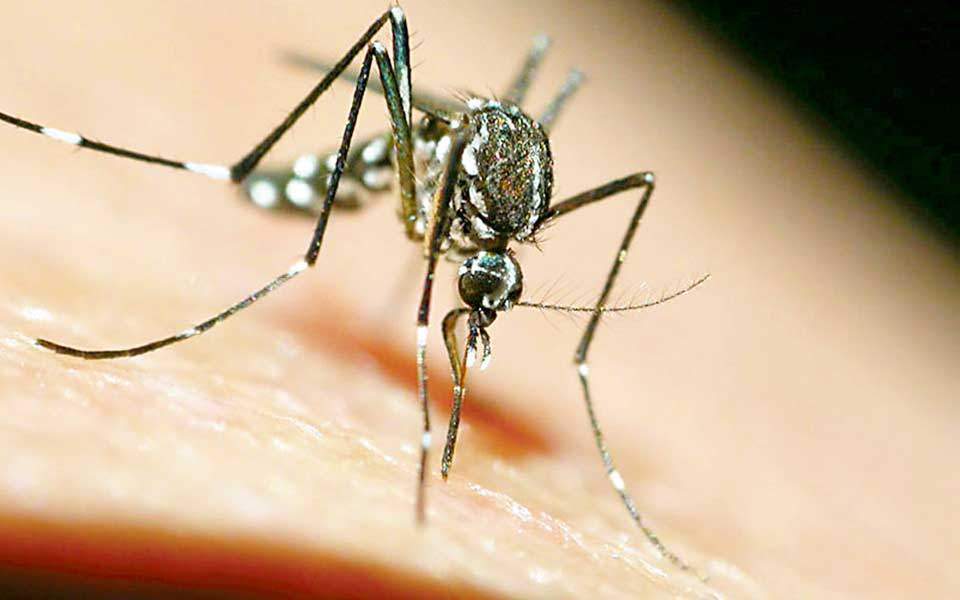Could we really ‘live well’ to 200?


Sergey Young turns away from the screen, lost in thought for a second, then gesticulates enthusiastically. “I’m not looking for immortality, you know, I’m happy with living 200 years, realising all my dreams.” It sounds good to me, too. He’s 49. I’m 46. Do we really have another 150-odd years to go?
“I do sincerely believe,” he says in English accented by both the Russia of his birth and of New York, where he works, “that in 20 years from now, the biggest obstacle for us living longer is not going to be science, it’s gonna be ethics, regulation.” He’s talking about the rules we will have to put in place to cope with us all pottering about for centuries – how such lifespans will affect population, sustainability, the environment… indeed, how it will change the very essence of what it means to be human.
Big thoughts, and we’re only a few minutes into our Zoom call. Young, a venture capitalist who runs the Longevity Vision Fund, which invests in health-tech companies promising to defeat ageing, teems with them. Ideas which occupy others for lifetimes detain him for moments – Big data! AI! Quantum computing! Gene editing! The microbiome! “I’m an optimistic, idealistic guy,” he says, optimistically and idealistically.
Now he’s written The Science and Technology of Growing Young, distilling his delight in the cutting-edge technology he sees in his work, and highlighting what he thinks will be the big breakthroughs in the short and long term.
Wearing a dark polo-shirt, his jovial, unlined features are a good advertisement for the medicine he is peddling. His dark hair has only the odd streak of grey. He looks relaxed – but then perhaps a holiday in Tuscany, from where he is calling, will do that for anyone.
As he waves his arms, another possible reason for his youthful demeanour becomes clear: he is plastered in wearable devices – smartwatches and rings which track his heart rate and sleep patterns: “I just took out my continuous glucose monitor.”
His latest health check-up was just a couple of months ago. “I didn’t even have the colonoscopy,” he says, deadly serious. “The combination of full-body MRI and colo-guard [an at-home colon cancer screening kit] was enough…” I nod sagely as though I, too, have just pooed into a sample bucket and sent it off to a lab.
But he’s not wrong that such tests do form part of an ongoing medical revolution. Early diagnostics – prevention, not cure – are increasingly hard-wired into healthcare provision, if only because stopping people becoming sick is vastly cheaper for governments than treating them once they do.
Many of us will already be surfing this wave of consumer health tech gadgets, from trackers in smartwatches to fingertip oxygen monitors deployed during COVID-19. In Young’s book, they are producing a wealth of data which, when allied with growing computing power to crunch through it, form the first great pillar of how life will be extended in the near time. How can he be wrong? Personalised, predictive medicine is already with us.
Gene editing, organ regeneration and what he calls “longevity in a pill” are his other great hopes. The first of these, too, is here today. A renegade Chinese scientist has already created the first gene-edited humans – twins born in 2018 whose DNA was tweaked to confer resistance to HIV. And I remain marked by an interview in 2019 with Sophie Wheldon, then a 21-year-old student from Birmingham whose life was saved by Car-T, a novel therapy which genetically modified her own white blood cells to attack her otherwise untreatable leukaemia.
Organ regeneration is more far-fetched, more far-off, even if Young has put his money where his mouth is, investing in LyGenesis, a company trying to grow functioning new organs (to replace failing old ones) using a patient’s own lymph nodes. So far, the company is working on growing livers, but Young says “they have many more organs in the pipeline”.
As for longevity in a pill, such hopes are pinned on drugs like metformin, usually administered for diabetes, which in some patients can have a beneficial effect on other body systems, too. But despite thousands of ongoing trials, it’s still far from being released as a regulated anti-ageing drug. That doesn’t deter Young. When we perfect such processes, he believes, “living to 150 or 200 years old will become as simple as getting vaccinated today”. For the moment, however, and as Young himself admits, regular exercise is, for most of us, safer and more effective.
Indeed, there is no getting around the boring, unchanging truths of staying well longer. Young is most proud of the book’s final chapter, which offers 10 top tips “to take advantage of the longevity revolution”. Quit smoking is number two. Don’t drink too much is there, too. Sleep and eat well. This is hardly revolutionary, though he is also a keen advocate of fasting (“Every week, I’m fasting 36 hours from Monday evening to Wednesday morning”), and plant-based diets: “I eat meat probably once every two or three weeks.”
He thinks that such steps will help him overcome “the cancer barrier, and the heart disease barrier, which is somewhere around 60 and 65 years”. But he knows that hurdling those only means crashing into the “neurodegenerative diseases barrier, which is around 80 or 90 years”.
But there is a tech solution to dementia, too, he thinks – and this is where things get more outlandish.
“If we want to help people to fight Alzheimer’s or neurodegenerative diseases,” he says, “integration between human brain and computer is the only way to solve it.” He talks of Elon Musk, whose company Neuralink is working on just such a “brain-machine interface” with the goal of enabling people with paralysis to directly use their neural activity to operate digital devices. He mentions digital representations of the elderly – “avatars” – which could continue, compos mentis, as the physical person’s dementia deteriorates, or even live on after they die. It sounds loopy, until he talks movingly of his grandfather, who died in 1995 and to whom he was close. “He was instrumental for me. I would love to have the opportunity to have 30 minutes with a [digital copy] of him in the virtual world. There’s so many questions I would still like to ask.”
Digitisation, human-robot fusions, what he calls “a fundamental redefinition of humans” – these are Young’s routes to ultra-long life, or even to immortality.
“Perhaps in your lifetime,” he writes, “it will become quite commonplace to have healthy 150-year-olds. By the year 2100, your grandchildren may very well be born with no expectation of ever dying.”
True, the techno wizardry he describes to fulfil such dreams – nanorobots whizzing around your body, fixing it up en route; sensors affixed to every organ, relaying real time information on cardiovascular function or potential infection; sensory augmentation allowing you to zoom in on far-off objects or hear far-off sounds – hover between reality and fantasy. But the astonishing advances of the past century – from organ transplants to space flight to, yes, life expectancy (which increased by more than 25 years in the 20th century) – surely permit such effervescent speculation today.
Many of the studies he cites have shown promise in mice, or yeast. Of course, as pharmaceutical companies know, it is a big step from there to approved medicines for men and women. But engagingly, Young doesn’t dodge the cynics’ barbs. Such uncertainty, he freely admits, makes committing money to his fund “really risky”. He advises against his investors deploying more than a per cent or two of their available cash on it; of the 14 start-ups in his portfolio, two have gone public. One, Sigilon Therapeutics, is working on “beads that ultimately become living biofactories [within the body] that produce proteins, hormones, antibodies and potentially, in the future, all other therapeutic substances, on demand, as the body requires them”. It sounds amazing, and the people behind it are highly eminent. Yet Sigilon made its market debut just nine months ago at $25 (£13). On New Year’s Eve it touched $67. Now it trades for under $7.
To those of us not riding such investment rollercoasters, however, it may not be so important what particular manifestation the coming healthtech revolution takes. What matters, and where Young is right, is that, in some form, it is coming – and we must address its implications sooner rather than later.
Will genetic engineering create a race of superhumans and be reserved for the super rich? Can we live longer and still be happy? Can we feed 11 billion people? His answers, correctly, are often counterintuitive: farming is undergoing its own tech-revolution; demographics point to the world population peaking but then slumping by century’s end. Magpie-minded, he talks discursively, hopping from one topic to another. To bring us back to longevity, I ask him – Oracle-like – how long I’ve got left.
At last he focuses.
“I think it’s extremely high probability for me and for you to live beyond 100 years.”
I feel delighted. But then I realise he doesn’t know I haven’t actually done my colo-guard test. Doomed after all.
Source: smh.com.au




